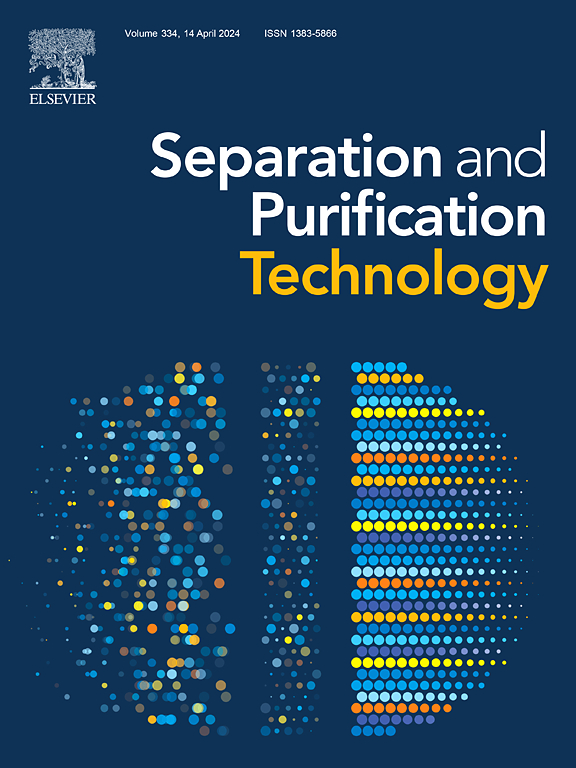基于框架结构和可设计溶剂的复合材料在分离领域的发展
IF 8.1
1区 工程技术
Q1 ENGINEERING, CHEMICAL
引用次数: 0
摘要
框架材料如金属有机框架(MOF)、共价有机框架(COF)和咪唑酸沸石框架(ZIF),具有许多突出的性能,包括大表面积、高孔隙率、可调孔径、稳定的热化学性能等。近年来,离子液体(ILs)和深共晶溶剂(DESs)由于其环保、低熔点等显著特性,作为创新的可设计或功能性溶剂,得到了迅速发展。在mof、COFs或zif的基体材料中引入il或DESs作为客体溶剂,可以改善复合材料的理化性能,使其在分离领域得到广泛应用。特别是,这些复合材料在气体储存、吸附、膜基气体分离和离子电导率方面优于原始框架材料。因此,本文对基于il或DESs的功能框架复合材料的合成、性能和分离的研究进展进行了回顾和总结。本文综述了复合材料在分离领域的机遇和挑战,为未来工业工艺的发展提供参考。本文章由计算机程序翻译,如有差异,请以英文原文为准。
Development of the composite materials based on framework structures and designable solvents in separation fields
The framework materials such as metal–organic framework (MOF), covalent organic framework (COF), and zeolite imidazolate framework (ZIF), possess numerous outstanding properties including a large surface area, high porosity, tunable pore size, and stable thermal and chemical capabilities, among others. In recent years, ionic liquids (ILs) and deep eutectic solvents (DESs), which serve innovative types of designable or functional solvents, have undergone rapid development due to their environmentally friendly nature, low melting point, and other significant properties. The introduction of ILs or DESs as guest solvents into the matrix materials of MOFs, COFs, or ZIFs can improve the physicochemical properties of the composite materials, enabling their widespread application in the field of separation. In particular, these composites outperform the original framework materials in terms of gas storage, adsorption, membrane-based gas separation, and ionic conductivity. Therefore, this review traces and summarizes the research progress in the synthesis, properties, and separation of functional framework composites materials based on ILs or DESs. This review aims to identify the opportunities and challenges of composite materials in the field of separation, providing a reference for the development of future industrial processes.
求助全文
通过发布文献求助,成功后即可免费获取论文全文。
去求助
来源期刊

Separation and Purification Technology
工程技术-工程:化工
CiteScore
14.00
自引率
12.80%
发文量
2347
审稿时长
43 days
期刊介绍:
Separation and Purification Technology is a premier journal committed to sharing innovative methods for separation and purification in chemical and environmental engineering, encompassing both homogeneous solutions and heterogeneous mixtures. Our scope includes the separation and/or purification of liquids, vapors, and gases, as well as carbon capture and separation techniques. However, it's important to note that methods solely intended for analytical purposes are not within the scope of the journal. Additionally, disciplines such as soil science, polymer science, and metallurgy fall outside the purview of Separation and Purification Technology. Join us in advancing the field of separation and purification methods for sustainable solutions in chemical and environmental engineering.
 求助内容:
求助内容: 应助结果提醒方式:
应助结果提醒方式:


